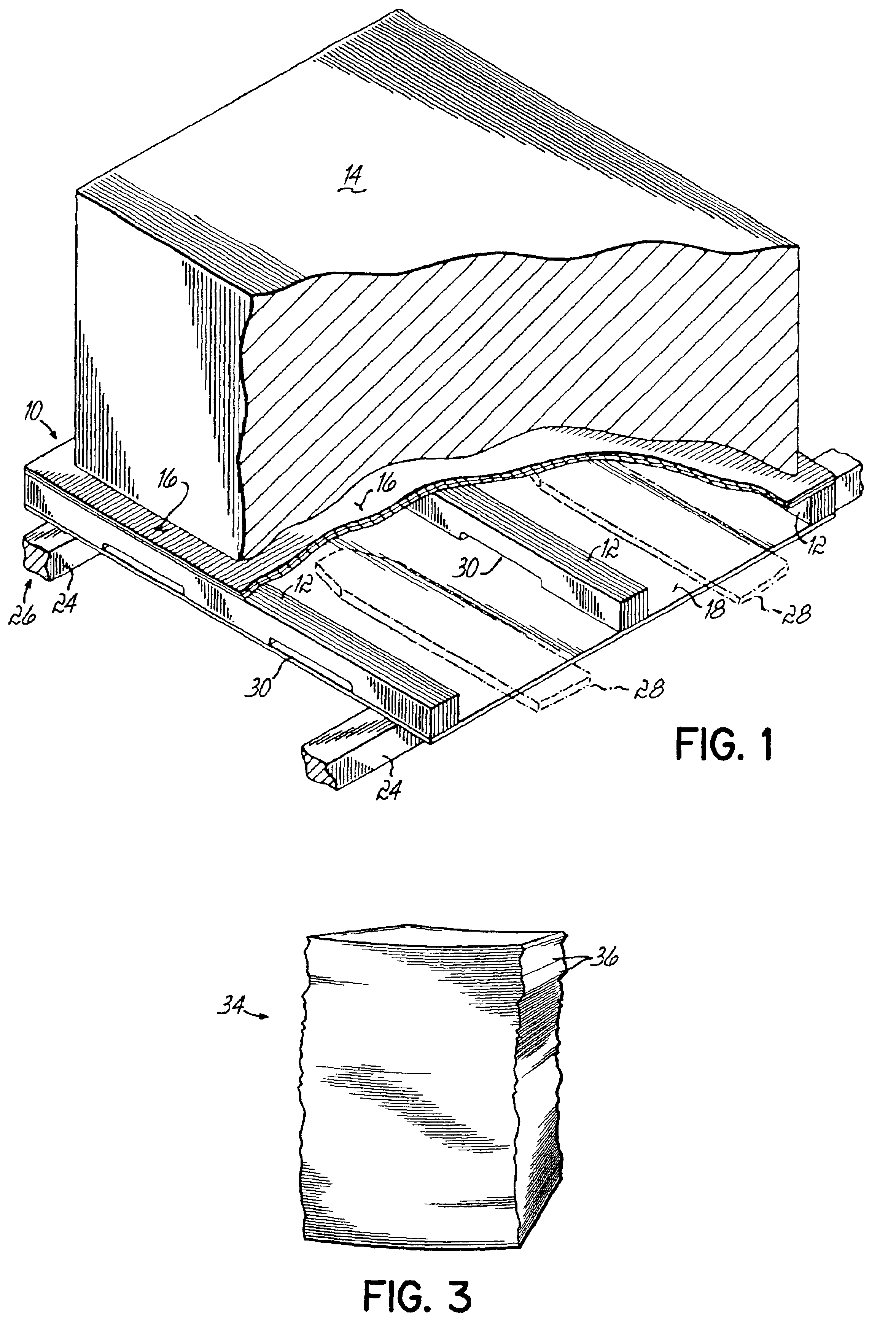Method and associated system for manufacturing reinforced paperboard pallet runners
a technology of paperboard and pallet runners, which is applied in the directions of packaging, paper/cardboard articles, transportation and packaging, etc., can solve the problems of delamination or separation of runners, reducing the effectiveness of pressure applied to stacks of multiple billets during prior manufacturing practices, and reducing the effectiveness of pressure applied to stacks of multiple billets. , to achieve the effect of avoiding delamination and separation of runners, minimizing the way of ending defective runners, and significantly improving production efficiency
- Summary
- Abstract
- Description
- Claims
- Application Information
AI Technical Summary
Benefits of technology
Problems solved by technology
Method used
Image
Examples
Embodiment Construction
[0028]Referring to FIG. 1, a presently preferred embodiment of a pallet manufactured according to this invention is shown. The pallet 10 includes a plurality, three of which are shown in FIG. 1, of generally parallel runners 12. It will be readily understood that the pallet 10 supports a load 14 and may include two, four (FIG. 1A) or another number of runners 12 within the scope of this invention. The runners 12 are sandwiched between an upper deck sheet 16 adhered, preferably by adhesive or the like, to an upper surface of each of the runners 12 and a lower deck sheet 18, likewise adhered by adhesive or the like, to a lower surface of the runners 12. The lower deck 18 sheet contributes to the structural integrity of the pallet 10 when rolling down the rollers of a conveyor (not shown), without crushing or collapsing the pallet 10 under the load 14. The lower deck sheet 18 as such aids in the alignment of the runners 12 for proper vertical orientation while used on the conveyor. How...
PUM
 Login to View More
Login to View More Abstract
Description
Claims
Application Information
 Login to View More
Login to View More - R&D
- Intellectual Property
- Life Sciences
- Materials
- Tech Scout
- Unparalleled Data Quality
- Higher Quality Content
- 60% Fewer Hallucinations
Browse by: Latest US Patents, China's latest patents, Technical Efficacy Thesaurus, Application Domain, Technology Topic, Popular Technical Reports.
© 2025 PatSnap. All rights reserved.Legal|Privacy policy|Modern Slavery Act Transparency Statement|Sitemap|About US| Contact US: help@patsnap.com



